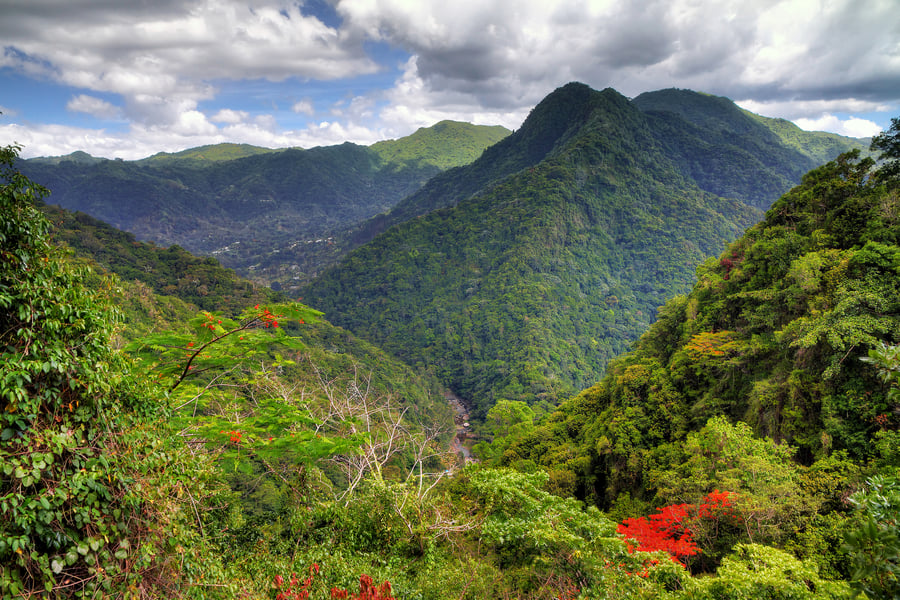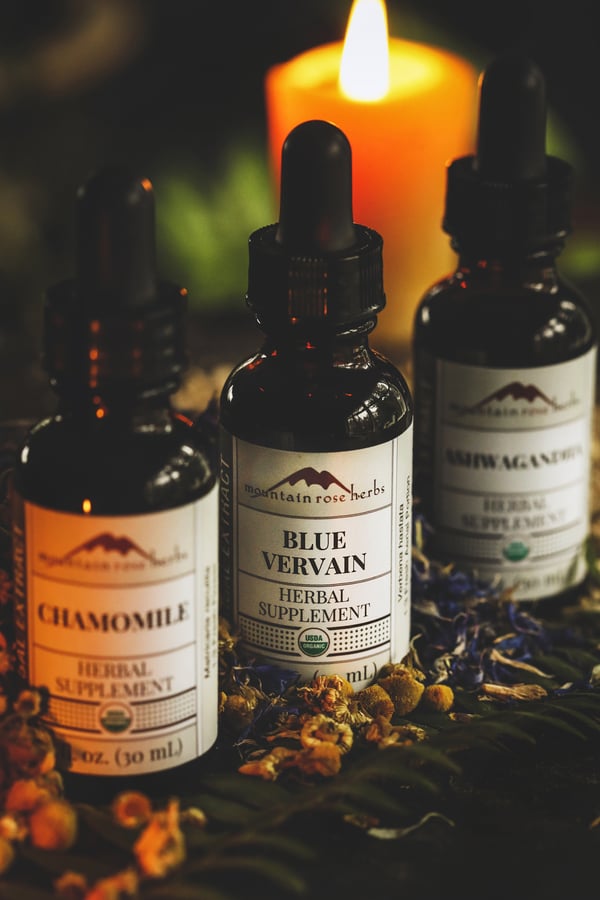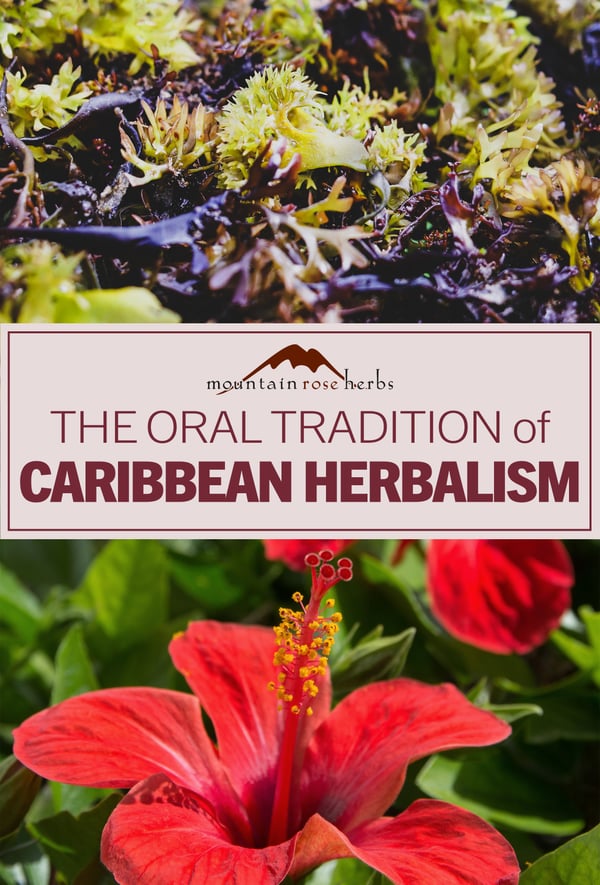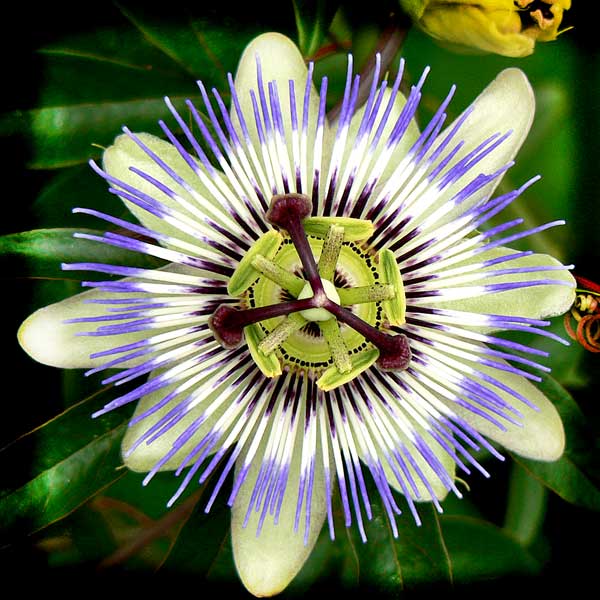
The Caribbean islands, scattered between North and South America, are a hotspot of weather, plant biodiversity, and culture. Islands range from tropical rainforests to chilly mountain peaks, some densely saturated with remote mogotes: isolated, steep-sided mounds on otherwise flat plains. The high humidity and rainfall contribute to a lush flora and fauna. There are over 11,000 discovered plant species, 189 amphibian species, and 564 bird species. The Caribbean’s herbal traditions are rooted in this abundance of biodiversity.
When I am in Puerto Rico visiting my family, I wake up to humidity and roosters calling. I remember this from my youth, too. I grew up mostly in Charlotte, North Carolina, but I came to Puerto Rico for long summer vacations and holidays to visit my grandparents and cousins. As an adult, I come back to see my family, to reconnect to the land, to learn more about myself. The knowledge my family and others have about the plants on the island is not a niche concept that makes them “herbalists” or “healers;” it is the common knowledge of a people about the world they inhabit.
The oral passing-down of tradition involving plants is alive and well. My youngest cousin drinks a warm milk with mint and honey to get to bed, and I’m sure the recipe for this blend will be passed down to her from our grandmother as she grows up. When I walk on the small mountain behind my family’s home in Guaynabo, they easily show me 5, 10, 20 different plants they have used for food, medicine, and beyond. My grandparents are a wealth of information, which they speak of casually in everyday life: like what to take for sore muscles, fever, or skin infections. I joined my abuela in harvesting carambola fruits to make juice; she showed me how to eat them to cool off in the hot sun. I walked alongside my abuelo as he cut yuca bushes to pull up and plant again. Later he would bring them in to be cooked by my abuela: fried or in a stew. In the evenings, everybody gets together while Abu cooks pot after pot of arroz con gandules, platanos, and pork and we talk about the day. On our plates, the many medicines of the Caribbean are present.
The “food-as-medicine” movement has shone a light on a concept that traditional cultures have known for a long time—that what we eat is our primary source of health and wellness. Everyday life in the Caribbean consists of one important thing: food! From sofrito in Puerto Rico to doubles in Trinidad, food remains vital to gatherings, family dynamics, and health and wellness.
In many Spanish-speaking islands, sofrito is a culinary preparation used to flavor any dish from proteins to rice. There are as many variations of this recipe as there are abuelas cooking. I have opened my grandmother’s freezer to find jar after jar of homemade sofrito, made using different herbs from her home garden. Some families have special ingredients and formulas, while others stick with the basic four ingredients: culantro, peppers, garlic, and onion. Culantro/recao (Eryngium foetidum) is a wild-growing herb with a pungent aroma like cilantro but richer and more intense. It is aromatic and good for digestion, while the onions and garlic are pungent aromatics that help impart a savory flavor and compliment the other spices. The peppers used in sofrito vary depending on location, but many islands in the Caribbean use aji dulce peppers: sweet, small peppers with a savory flavor. For spicy sofrito, some cooks add a scotch bonnet, jalapeno, or other hot peppers. Some like to add coriander or oregano brujo (Plectranthus amboinicus). The ingredients are combined in a food processor or chopped finely and mixed, then added in oil before or during the cooking process.
Another popular Caribbean preparation is made from hibiscus (Hibiscus sabdariffa), also known as sorrel or jamaica. Hibiscus tea is not made from the actual flower of the plant but from the sweet and tangy calyx underneath. As with many herbal preparations in the Caribbean, it isn’t generally made with ratios of cups and tablespoons but is measured by handfuls and intuitive estimates. For making hibiscus tea, color is key; the brew should not end up light red or pink but be blood-red/purple. The calyxes are brought to a boil and the heat turned off to let them infuse, sometimes overnight. Sometimes ingredients like ginger and cinnamon are added, as well as sugar to balance out the tartness. This brew is usually drunk cold to cool down the body in the heat.
In Jamaica, sea moss (Chondrus crispus) has long been a key ingredient in preparations and drinks. This slimy sea plant is a source of trace minerals and key vitamins, while also offering mucilaginous support for stomach issues. In Caribbean herbalism, sea moss is considered a general tonic to be taken in smoothies, often alongside different bush herbs. Growing in popularity, sea moss is at risk of being overharvested for a market keen on its nutritional value, with overpriced simple preparations of the plant flooding local markets. However, there are plenty of people still harvesting from traditional patches tended to for generations in the waters, nourishing themselves and their communities.
There are literally thousands of “food-as-medicine plants” throughout the islands, some used to address acute symptoms and others used in daily tonics.
I see cundeamor/cerasee (Momordica charantia) everywhere; this vining herb in the Cucurbitaceae family grows wild along roadsides and on fences. Producing a small green and bitter fruit, it turns yellow when ripe and opens itself to reveal large seeds covered in an edible sweet, red pulp. The vine of cundeamor is harvested and boiled to make a dark tea that is used topically as a wash for scrapes and skin issues and is taken internally as a powerful bitter with an affinity for the digestive system and liver support.
Vervain/verbena (Stachytarpheta jamaicensis) is another botanical ally that is regularly made into a tea. The edible leaves and small purple flower heads of the Verbenaceae bush can be considered the analog to temperate verbenas like blue vervain (Verbena hastata) or vervain (Verbena officinalis). In cuisine, they taste like mushrooms! Made into a soothing tea, vervain offers gentle support for body fatigue and sleep issues.
Another common Caribbean plant ally is oregano brujo/broadleaf thyme (Plectranthus amboinicus). A succulent and strongly aromatic herb, oregano brujo is common in home gardens and as a patio plant. Originating in Africa, it propagates easily by cuttings. The long, sprawling stems of the plant hold large, thick leaves that can be substituted for thyme, oregano, and other spices with a kick of menthol. Many people eat it daily to freshen their breath, and it has a long history of use for congestion and stomach issues. The leaves can also be applied externally as a poultice.
There is also guanabana leaf/sourop leaf (Annona muricata). The evergreen Annona muricata tree bears large, green fruits full of sweet, white, and tangy pulp that hosts a myriad of health benefits and is the perfect way to cool down in the heat. The glossy leaves of this fruit tree are also a vital source of food-as-medicine. Being a mild nervine, the leaves are often brewed with other herbs like hibiscus and drunk to calm the nerves and support healthy blood pressure.
I began my journey with herbalism in my abuela’s home and grew in knowledge passed to me by countless family members. I have been to Mexico, Costa Rica, and Puerto Rico numerous times to learn more about these herbal traditions. Each time, I am amazed at the sheer amount of knowledge that I absorb about plants and the traditional practices associated with them.
Every plant is a story, every town, every person, and their individual experiences all create the stories I weave through my relationships with my plant allies. We all house such memories and connections with our plantcestors that will continue for generations. What are your plant allies?
Looking to learn more from Brandon ruiz?
You Can Find Him Here!
You May Also Enjoy:
- Reclaiming Food Sovereignty in the BIPOC Community
- Supporting Heritage Herbalism in Appalachia
- How Fair Trade Helps Women and Children















